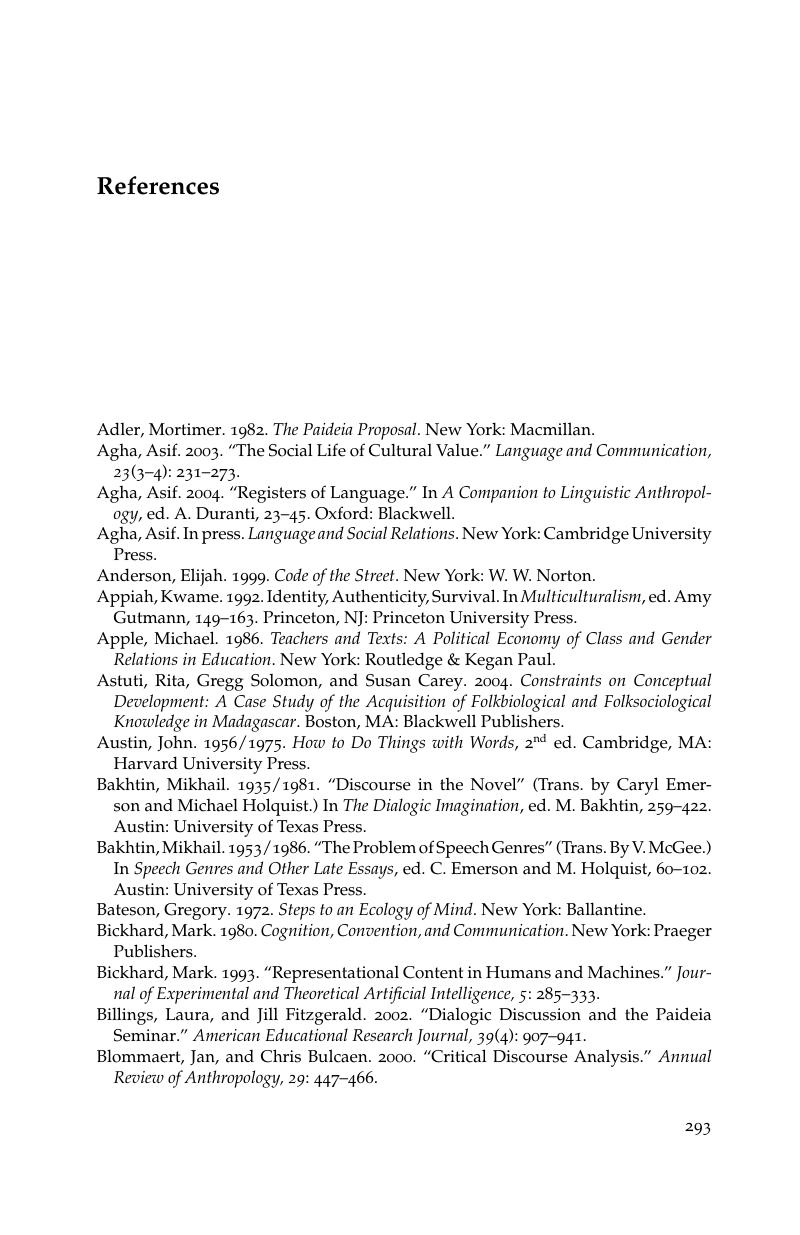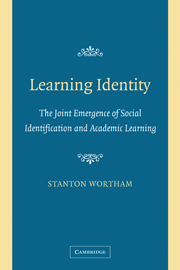Book contents
- Frontmatter
- Contents
- Acknowledgements
- 1 Self/Knowledge
- 2 Social Identification and Local Metapragmatic Models
- 3 Academic Learning and Local Cognitive Models
- 4 Tyisha Becoming an Outcast
- 5 Maurice in the Middle
- 6 Denaturalizing Identity, Learning and Schooling
- Appendix A Abbreviations of Names
- Appendix B Transcription Conventions
- References
- Index
- References
References
Published online by Cambridge University Press: 05 June 2012
- Frontmatter
- Contents
- Acknowledgements
- 1 Self/Knowledge
- 2 Social Identification and Local Metapragmatic Models
- 3 Academic Learning and Local Cognitive Models
- 4 Tyisha Becoming an Outcast
- 5 Maurice in the Middle
- 6 Denaturalizing Identity, Learning and Schooling
- Appendix A Abbreviations of Names
- Appendix B Transcription Conventions
- References
- Index
- References
Summary

- Type
- Chapter
- Information
- Learning IdentityThe Joint Emergence of Social Identification and Academic Learning, pp. 293 - 302Publisher: Cambridge University PressPrint publication year: 2005



